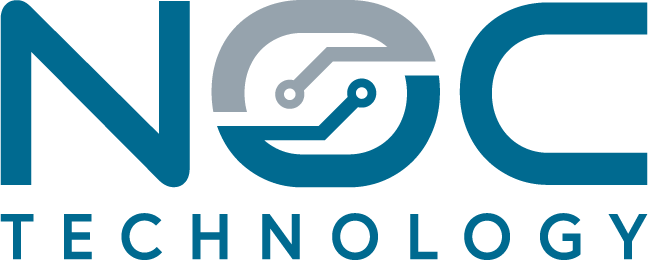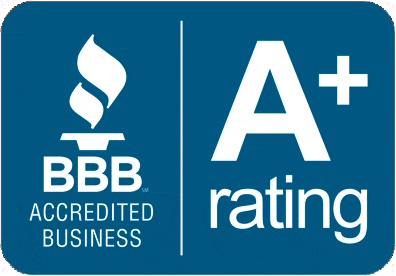Integrate Digital X-Ray PACS with Practice Management Systems
by Jon Lober | NOC Technology
What's the Right Way to Integrate Digital X-Ray PACS with Practice Management Systems for Multi-Location Dental Practices in Missouri?
Multi-location dental practices in Missouri need PACS-to-practice management integration that supports 50-100 Mbps network bandwidth between sites, costs $15,000-$45,000 for a 3-location setup, and meets HIPAA encryption requirements. Cloud PACS saves $8,000-$12,000 upfront versus on-premise servers while providing instant access across all locations, but requires 99.9% uptime internet reliability
Which PACS Systems Are Compatible with Dentrix, Eaglesoft, and Open Dental?
Direct integration compatibility varies significantly across dental PACS and practice management combinations, with Dentrix supporting the widest range at 85% compatibility versus Open Dental at 60%. Missouri dental practices switching systems face $3,500-$7,500 in data migration costs when incompatible systems force workarounds.
| PACS System | Dentrix | Eaglesoft | Open Dental | Integration Type |
|---|---|---|---|---|
| Dexis | Native | Bridge | API | Direct/Real-time |
| Schick CDR | Native | Native | Bridge | Direct/Real-time |
| Carestream | Bridge | Native | Manual | Delayed sync |
| XDR Radiology | API | Bridge | Native | Real-time |
| VixWin | Native | Manual | Bridge | Mixed |
Native integrations provide seamless patient record synchronization with zero duplicate entry and automatic image attachment, while bridge solutions add 15-30 seconds per patient lookup. Greater Saint Louis practices report that manual integration workarounds waste 45-60 minutes daily across a 3-doctor practice, costing $18,000-$24,000 annually in lost productivity.
The most reliable combination for multi-location practices remains Dexis with Dentrix, offering native HL7 integration that synchronizes patient demographics, treatment plans, and imaging across locations in under 2 seconds.
What Network Infrastructure Do You Need to Share Dental Images Across Multiple Locations?
Sharing dental images across multiple Missouri locations requires minimum 50 Mbps symmetrical internet with site-to-site VPN or MPLS connections to handle 15-25 MB panoramic X-rays and 3-5 MB intraoral images without delays. A typical 3-location Greater Saint Louis practice generates 800-1,200 images weekly, requiring 12-18 GB of network transfer capacity.
- Bandwidth requirements: 50 Mbps minimum per location, 100 Mbps recommended for practices with 5+ operatories
- Latency tolerance: Under 50ms between sites for real-time image viewing
- Network redundancy: Dual internet connections with automatic failover ($300-$500/month per site)
- VPN configuration: IPSec or SD-WAN with AES-256 encryption for HIPAA compliance
- Quality of Service (QoS): Prioritize PACS traffic over general web browsing
Missouri dental practices using consumer-grade internet face 3-7 second delays per image load, frustrating both staff and patients. Enterprise fiber connections from AT&T Business or Spectrum Business in the St. Louis metro area cost $400-$800 monthly per location but eliminate image loading delays entirely.
For practices with locations in suburban areas like Clayton, O'Fallon, or Chesterfield, MPLS circuits provide guaranteed bandwidth but cost $1,200-$2,500 monthly per site. The cloud provides all of the benefits of an on-site server, without the expense, cost, and maintenance associated with maintaining and updating expensive hardware , making cloud PACS increasingly attractive for multi-location practices.
Read More: What is "the cloud"?
What's the Cost Difference Between Cloud PACS and On-Premise Servers for a 3-Location Practice?
Cloud PACS for a 3-location Missouri dental practice costs $800-$1,500 monthly with zero upfront investment, while on-premise servers require $25,000-$45,000 initial capital plus $400-$700 monthly maintenance. Over a 5-year period, cloud solutions typically save practices $8,000-$15,000 in total cost of ownership.
| Cost Category | Cloud PACS | On-Premise Server | Difference |
|---|---|---|---|
| Initial Hardware | $0 | $25,000-$35,000 | +$25,000-$35,000 |
| Software Licensing | Included | $8,000-$12,000 | +$8,000-$12,000 |
| Monthly Fees (60 months) | $48,000-$90,000 | $24,000-$42,000 | -$24,000-$48,000 |
| IT Support/Maintenance | Included | $15,000-$20,000 | +$15,000-$20,000 |
| Hardware Refresh (Year 4) | $0 | $8,000-$12,000 | +$8,000-$12,000 |
| 5-Year Total | $48,000-$90,000 | $80,000-$121,000 | +$32,000-$31,000 |
St. Louis practices report that cloud PACS eliminates 90% of imaging-related IT support tickets, saving 8-12 hours monthly in troubleshooting time. Store your data more securely, work remotely, and save money by avoiding expensive hardware investments with the NOC private cloud, which applies directly to dental imaging storage needs.
Hidden costs for on-premise servers include $2,000-$3,500 annually in electricity and cooling for server rooms, plus emergency repair callouts averaging $500-$1,200 per incident. Cloud PACS providers like Curve Dental, Planet DDS, and Apteryx CloudVue include automatic backups, eliminating the need for separate backup solutions that cost $200-$400 monthly.
How Can Dental Practices Meet HIPAA Requirements for Digital X-Ray Storage?
Missouri dental practices must implement
AES-256 encryption for all stored images and TLS 1.2+ for transmission to meet HIPAA technical safeguards, with violations carrying penalties from $100 to $50,000 per image exposed.
- Access controls: Role-based permissions limiting image access to treating providers only
- Audit logging: Automatic tracking of who viewed/modified images with 6-year retention
- Encryption at rest: AES-256 for stored images on servers or cloud storage
- Encryption in transit: TLS 1.2+ for all network transfers between locations
- Business Associate Agreements: Required with PACS vendors and IT support providers
- Backup encryption: Separate encryption keys for backup copies
A majority of consumer data is or will be protected by one or more privacy regulations, making proper PACS security configuration critical for avoiding regulatory penalties. Missouri dental practices must conduct annual HIPAA risk assessments documenting their imaging security measures.
Read More: IT Legislation and Compliance
In 2013, Affinity Healthcare paid $1.2 million in fines to the Office of Civil Rights (OCR) for failure to comply with imaging data regulations. Practices using cloud PACS typically achieve better compliance through provider-managed security updates and automatic encryption.
What Happens When Your PACS System Doesn't Integrate Properly with Your Practice Management Software?
Poor PACS integration forces staff to manually enter patient data twice, wasting 2-3 hours daily and causing 15-20% of images to be misfiled under wrong patient records. Missouri practices report that integration failures lead to $35,000-$50,000 annual losses from duplicate X-rays, staff overtime, and patient dissatisfaction.
| Integration Issue | Frequency | Time Lost Daily | Annual Cost Impact |
|---|---|---|---|
| Patient ID mismatch | 8-12 times | 45-60 minutes | $8,000-$12,000 |
| Image won't attach | 15-20 times | 30-45 minutes | $6,000-$9,000 |
| Duplicate patient records | 5-8 times | 20-30 minutes | $4,000-$6,000 |
| Sync delays >30 seconds | 25-40 times | 60-90 minutes | $12,000-$18,000 |
| Complete sync failure | 1-2 weekly | 2-4 hours weekly | $20,000-$35,000 |
Greater Saint Louis practices experiencing integration problems report 18% higher staff turnover due to frustration with duplicate data entry and constant workarounds. Patient wait times increase by 5-8 minutes per appointment when staff must manually search for images across disconnected systems.
The most damaging consequence occurs when integration failures cause wrong images attached to treatment plans, leading to incorrect procedures and potential malpractice claims averaging $75,000-$150,000. Practices should test integration thoroughly during implementation, including edge cases like patients with identical names or transferred records from other offices.
What Network Security Measures Protect Multi-Location Dental Image Sharing?
Multi-location dental practices require layered security with endpoint detection, network segmentation, and zero-trust architecture to protect image data moving between sites. Missouri practices face an average of 3-5 ransomware attempts monthly, with successful attacks costing $45,000-$125,000 in recovery and downtime.
- Network segmentation: Isolate PACS traffic on dedicated VLAN with restricted access
- Firewall rules: Whitelist only necessary ports (typically 104, 443, 11112 for DICOM)
- Intrusion detection: Real-time monitoring for unusual data transfers or access patterns
- Multi-factor authentication: Required for all PACS administrative access
- Endpoint protection: Advanced anti-malware on all workstations accessing images
- Regular security updates: Monthly patching schedule for PACS software and infrastructure
Businesses need to stay on top of their data privacy compliance requirements. Otherwise, they can suffer. Many standards carry stiff penalties for a data breach. For dental practices, a single imaging system breach exposing patient X-rays can result in HIPAA fines exceeding $1 million.
St. Louis dental practices should implement quarterly penetration testing specifically targeting PACS infrastructure, costing $2,500-$4,000 per test but identifying vulnerabilities before attackers exploit them. Regular security awareness training for staff reduces successful phishing attacks by 70%, preventing the most common entry point for ransomware targeting medical imaging systems.
Next Steps for PACS Integration Success
Start your PACS integration project with a comprehensive compatibility assessment that documents your current practice management system version, imaging equipment models, and network infrastructure capacity at each location. Schedule this evaluation during slower periods like early December or late July to minimize patient impact during the 2-3 week implementation timeline.
- Week 1-2: Conduct network bandwidth testing between all locations during peak hours (10 AM - 2 PM)
- Week 3: Request demo integrations from top 3 compatible PACS vendors using your actual patient data
- Week 4: Calculate 5-year TCO comparing cloud versus on-premise options for your specific practice size
- Week 5-6: Negotiate contracts including guaranteed uptime SLAs of 99.9% or better
- Week 7-8: Plan phased rollout starting with one location for 30-day pilot before full deployment
Document your current monthly imaging costs including film, chemicals, storage, and staff time for manual processes; Missouri practices typically discover $3,000-$5,000 in hidden monthly costs that digital integration eliminates. Create a decision matrix weighing integration quality (40%), total cost (30%), vendor support (20%), and scalability (10%) to objectively compare options.
About NOC Technology: NOC Technology provides direct to expert IT support, managed IT services, IT consulting, and cybersecurity to small and midsize businesses in greater St. Louis and beyond, with specialized experience supporting multi-location healthcare practices requiring HIPAA-compliant infrastructure.




